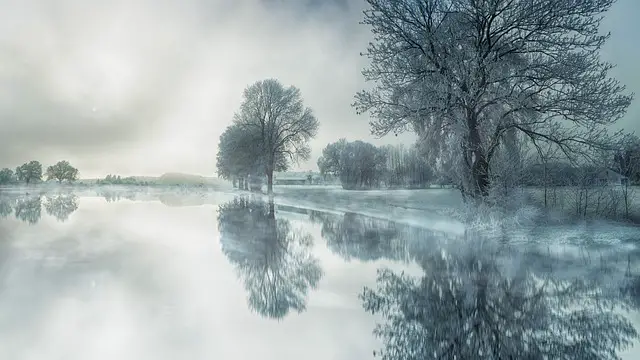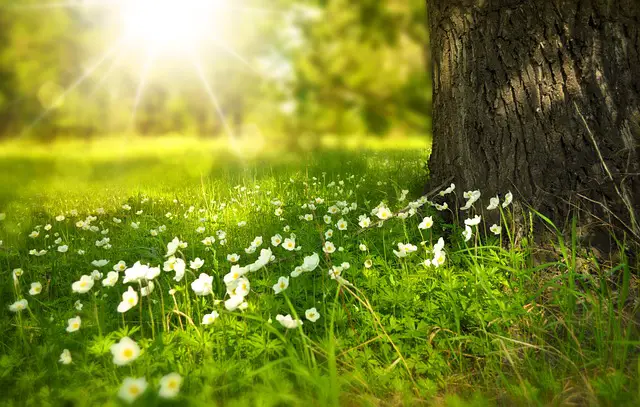Summer is characterized by warm weather, longer daylight hours, and lush vegetation, while winter is cold with shorter days, often featuring snow and bare trees.
TL;DR Summer Vs. Winter
Summer is a season of warmth, long days, and vibrant colors. It offers opportunities for outdoor activities such as swimming, hiking, and barbecues. On the other hand, winter brings cold weather, shorter days, and a serene white landscape. It is a time for cozying up by the fireplace, enjoying hot cocoa or tea, and engaging in winter sports like skiing or ice skating.
What is Summer?

Summer is one of the four seasons, typically occurring between spring and autumn. It is characterized by warm or hot weather, longer daylight hours, and a more vibrant natural environment.
During summer, temperatures rise, and the sun’s rays are more direct, resulting in higher temperatures and increased outdoor activities. In many regions, summer is associated with vacations, outdoor sports, and relaxation. It’s a time when plants thrive, yielding colorful flowers and ripe fruits.
People often seek relief from the heat by swimming, enjoying ice cream, and engaging in various outdoor festivities, making summer a season of leisure and enjoyment.
What is Winter?

Winter is one of the four seasons, occurring after autumn and before spring. It’s characterized by cold temperatures, shorter daylight hours, and often the presence of snow and frost.
In many regions, winter transforms the landscape into a serene, white wonderland, with trees stripped of leaves and frozen bodies of water. People adapt by wearing warmer clothing and engaging in winter activities like skiing, ice skating, and cozying up by the fireplace.
Winter is also associated with holidays like Christmas and New Year’s, fostering a sense of togetherness and celebration. It’s a season that invites reflection, introspection, and the appreciation of contrasts in nature.
Summer Vs. Winter – Key differences
| Aspect | Summer | Winter |
|---|---|---|
| Temperature | Warm to hot | Cold to very cold |
| Daylight Hours | Longer days | Shorter days |
| Weather | Clear skies, occasional storms | Snow, rain, frost |
| Clothing | Light clothing | Heavy, insulated clothing |
| Outdoor Activities | Swimming, hiking, outdoor sports | Skiing, snowboarding |
| Landscape | Lush, green, and vibrant | Snow-covered, barren trees |
| Holidays and Festivals | Often vacation time | Holidays like Christmas |
| Seasonal Foods | Fresh fruits and BBQs | Hearty, warming meals |
| Activities | Beach vacations, picnics | Snowball fights, skiing |
| Mood | Lively, energetic | Cozy, introspective |
Activities and Traditions Associated with Each Season
Summer
- Beach Vacations: Enjoying the sun, sand, and water.
- Barbecues and Picnics: Outdoor cooking and dining.
- Swimming: Visiting pools, lakes, and beaches.
- Summer Camps: Especially for children.
- Fireworks: Often associated with Independence Day celebrations.
Winter
- Winter Sports: Skiing, snowboarding, ice skating.
- New Year’s Eve: Celebrating the new year with parties and fireworks.
- Hanukkah: Lighting the menorah and exchanging gifts.
- Valentine’s Day: Celebrating love and affection with cards and gifts.
Physical and Emotional Effects of Seasons on Humans
Physical Effects
- Temperature and Health: Seasonal temperature variations can impact health, affecting susceptibility to illnesses like colds and flu in winter or heat-related issues in summer.
- Sunlight and Vitamin D: Reduced sunlight in winter can lead to vitamin D deficiency, potentially affecting bone health and mood.
- Allergies: Seasonal allergies, often triggered by pollen in spring or fall, can cause respiratory issues and discomfort.
- Weight and Diet: People may change their eating habits seasonally, with more hearty foods in winter and lighter fare in summer, potentially impacting weight.
- Sleep Patterns: Seasonal changes in daylight can affect circadian rhythms and sleep quality.
Emotional Effects
- Seasonal Affective Disorder (SAD): Some individuals experience SAD, a form of depression that occurs in specific seasons, often in winter due to reduced daylight.
- Mood and Energy: Seasonal changes can influence mood and energy levels. Many people feel more energized and happier in the summer, while winter can bring feelings of lethargy or sadness.
- Activities and Social Interactions: Seasonal activities and holidays can influence social interactions and feelings of togetherness or loneliness.
- Stress and Holidays: The holiday season can bring both joy and stress, affecting emotional well-being.
- Productivity and Routine: Seasonal changes can impact daily routines and work productivity, especially in agriculture and outdoor industries.
It’s important to note that individual responses to seasons vary widely, and many factors, including genetics and personal circumstances, can influence how seasons affect a person. Maintaining a healthy lifestyle, seeking social support, and being aware of seasonal challenges can help mitigate the negative effects and enhance the positive aspects of each season.
Image Credits
Featured Image By – Larisa Koshkina from Pixabay








